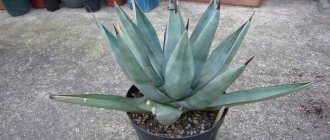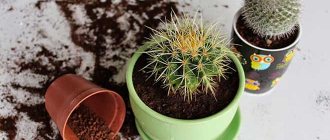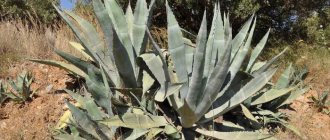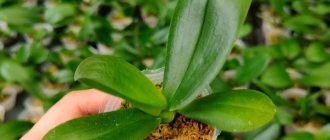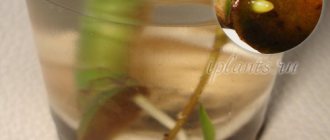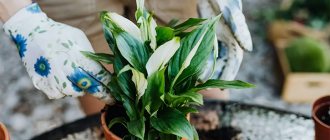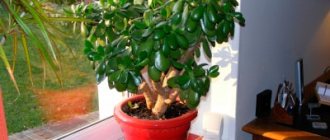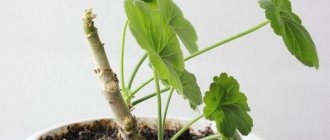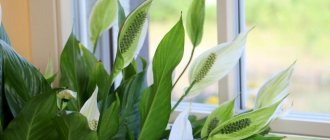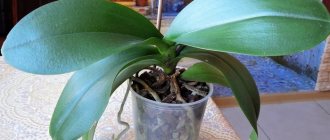Agave belongs to the genus of unisexual plants. Belongs to the Agave subfamily and the Asparagus family. There are about 300 species in total. Agave is common on the islands of the Caribbean, Central America and the southern United States. The plant was brought to Europe in the second half of the 16th century. It quickly gained fame. It began to be cultivated as an exotic and ornamental plant. In the Mediterranean countries and on the Black Sea coast of Crimea and the Caucasus, agave is grown in open ground, and in temperate and northern latitudes it decorates greenhouses and house rooms.
About the plant
The name agave comes from the Greek “agauos”, which means “amazing” and “noble”. The plant is named after the daughter of one of the most ancient mythical kings. In nature it blooms quite rarely, at 6-15 years of life. The peduncle forms an impressive up to 12 m with several thousand flowers.
Agave is a perennial herbaceous succulent plant with a shortened stem, around which a rosette of hard and fleshy leaves develops. The leaves differ from the leaves of other plants in the presence of water-storing tissue.
Agave leaves are thin, elongated and end at the ends with sharp and hard thorns, therefore, to avoid troubles, they should be trimmed when growing at home.
Agave bloom
At home, agave practically does not bloom, so it is sometimes called agave, mistakenly believing that it blooms after 100 years. In fact, in its homeland and in open ground, agave blooms in the 10-15th year of life, in greenhouses - after 20-30 years. But there are also species that actually bloom after 100 years. The flowering of agave is unusually majestic: it grows a long, strong peduncle up to 8 m in height, bearing at the top a huge inflorescence in the shape of a candelabra, numbering several thousand yellowish-white flowers. After flowering, the plant dies, and young shoots grow from the buds of the rhizomes.
Agave flowering
Agave transplant
Young plants require annual spring replanting. An adult agave is replanted every 3-4 years. Note that when planting, you should not deepen the neck of the plant too much; in this position, it quickly begins to rot, which leads to its death.
Agave transplantation
On a note!!!
When replanting, you should choose a pot slightly larger in size than the previous one. The plant is grown in flat containers.
Agave propagation
It reproduces by seeds and daughter shoots formed at the base of the mother plant.
Agave from seed
Seeds are sown in February-March to a depth of 0.5-1 cm. At a temperature of 20-25°, the seeds germinate within 5-7 days.
Agave seeds
15-20 days after the appearance of the first leaf, the second one develops, after 20 days - the third leaf, which in two weeks reaches 8 cm long and 1.5 cm wide.
By this time, the third adventitious root appears. After 2-3 weeks, the fourth leaf appears and a rosette is formed. The shortened underground stem reaches 1-1.5 cm in diameter.
Agave propagation by shoots
Agaves are propagated by shoots formed at the base of the trunk. The plant is propagated by separating them from the mother trunk or by cutting rhizomes from a shortened trunk. There should be one knot on each separated piece. The cut pieces are dried (2-3 hours), and then sprinkled with charcoal powder and planted in sand at a temperature of 20°.
Agave propagation by shoots
The separated offspring are planted in pots. The composition of the earth mixture is as follows: turf, leaf, sand (1:1:1 h). After planting, plants begin watering after 2-3 days.
It is advisable to place young plants in a greenhouse in the summer. In the first year of growing season, young agaves form 4-6 leaves, in the second - 7-9, in the third - 10-12 leaves.
Agave propagation by seeds
Growing succulents from seeds, and in particular agaves, is in most cases the only way to propagate them.
Today there is a huge variety of seeds available from a considerable number of sellers. Let’s immediately make a reservation that seeds should be purchased from well-known sellers who have proven themselves to be specialists in this field. Of course, good seeds that correspond to what is written in catalogs and especially on bags can be bought from other sellers, but here you rely on luck and risk your money. Plus, by buying from reputable sellers, you get more seeds for less money. Considering that the germination rate of agaves is not that great, this is of great importance. According to the statistics of my sowings, the average germination of seeds of various types of agave is approximately 25%. This is despite the fact that germination often can be less than 10%. If we talk about good results, then I managed to achieve a record germination rate for me when planting at 60%. I also do not recommend buying mixtures of seeds of different types, since they can germinate at different times, they may require different conditions and this can make growing very difficult. In addition, for a mixture of 10 seeds you will pay a lot of money, which this mixture most likely is not worth. If you do not yet have experience and you do not have your own technique, then it is better to practice on good seeds, easy-to-grow species. You need to try different well-known methods, of which there are many described, and choose the one that gives the best results in your conditions.
By and large, the seeds of agave, and other succulents, can be sown at any time of the year, because in this case you create the climate and season for your plants yourself. I don’t sow except in the fall, but this is rather my personal prejudice. All around us, nature is withering, plant life is fading, and this is probably taking its toll.
Well, I’ll finish the introduction here and move directly to practice.
First you need to decide where you will sow the seeds. For large quantities of one type of seed, a large rectangular container works well. It should not be too deep, otherwise simply do not fill it to the brim with substrate, otherwise oxygen access to the soil will be difficult. You can also sow seeds of different types in such a container, but it is better to divide its space to separate one type from another. It all depends on your imagination. Some divide the container space using plastic or glass partitions, some use container-in-container technology, when several small containers are placed in one large container or microgreenhouse, each of which is sown with seeds of a certain type. You can also use small, low square pots that can also be placed in a large container. For planting, you can use the same substrate that is used for adult plants, which you can prepare yourself or use ready-made purchased ones. Before planting, the substrate must be sifted to get rid of large particles. It is also advisable to bake it to be sure that it is free of pests, weed seeds and fungal spores. To do this, you need to keep the substrate at a temperature of about 60C for 15-30 minutes, depending on its origin.
When the substrate is prepared, it is poured into a container or pots, which are placed on a tray with water and held until all the soil is saturated with moisture. Do not forget about drainage, the layer thickness of which should be at least two centimeters. After this, the seeds are placed on the surface. Agave seeds can vary in size from quite large to very small. Large ones can be easily spread out over the surface in equal increments, but small ones can be slowly and evenly poured out of the bag, gently hitting it with your finger. Then the seeds are carefully sprayed with water from a spray bottle and covered with a layer of coarse sand. The size of the sand is also important and you will have to select it experimentally. Sand that is too fine can create a hard, cemented surface that is very difficult for seedlings to break through, and sand that is too coarse can burn small plants. I use calcined and sifted lake sand with an average particle size of no more than two millimeters. Here I would also like to draw attention to the preparation of seeds. Before planting, you can soak the seeds for a day in various stimulants or preventive agents. I am inclined to use the latter, for example Fitosporin. The active ingredient of this drug is living cells and spores of the bacterium Bacillus subtilis, used for the prevention and suppression of fungal and bacterial diseases. Available in the form of a paste in small plastic bottles.
For germination of most seeds, the optimal temperature is 25-30°C during the day and about 20°C at night. Lowering the temperature at night is mandatory, as it repeats temperature changes in natural conditions and has a beneficial effect on seed germination. Those types of agaves that naturally grow at fairly high altitudes in the mountains are less fastidious and germinate well at lower temperatures, but even for them a nighttime temperature drop is necessary. In our conditions, to ensure the necessary climate, artificial heating of the container or the use of a microgreenhouse will most likely be required. In this case, you can use the heat from the batteries while they are working or use more advanced equipment. There are industrial designs for seed germination in which humidity, temperature and lighting are controlled and adjusted automatically in accordance with a given program. You can make such a device yourself. It is useful for planting any heat-loving plants. It’s not difficult to make automation yourself; there are many diagrams on the Internet and various literature, and ready-made timers, thermostats and other equipment are sold in stores. Here, as they say, everything is limited by your imagination and the amount of money allocated for invention. The easiest way I know is to seal the container in a plastic bag. This prevents the substrate from drying out and allows it to maintain a higher temperature than room temperature. Let's summarize the above. In the process of seed germination, the main condition is compliance with temperature conditions and maintaining sufficient humidity.
The next stage is probably the most favorite for all gardeners. After some time has passed after planting, the first shoots begin to appear. Different types of agaves take different times to germinate. For some species, the first shoots begin to appear after a week, for others after two. I usually don't lose hope within a month. When seedlings begin to appear, another component comes into play - light. Agaves come from hot regions where the sun shines more than 300 days a year, so light is a very important factor for small plants. If there is not enough natural lighting, then artificial lighting must be used. You can read this article about artificial lighting. But what is optimal for babies is not direct scorching sun, but direct diffused light. This effect can be achieved by separating the plants from direct sun with a transparent mesh. Artificial light can be adjusted, so there are no such problems with it. Ventilation is also very important at this stage. Plants at this stage of growth especially need fresh air. You can ventilate the container twice a day by opening the container or microgreenhouse, at the same time monitoring the soil moisture and visually the condition of the plants. Humidity must be maintained at a moderate level without allowing the substrate to dry out. You also need to ensure that mold and pests do not appear on the soil. Small flying midges can very quickly ruin an entire container of seedlings and ruin your mood.
When the plants grow older, they will need to be transplanted into separate pots. It is advisable to transplant fast-growing species within a few months, while slow-growing species can be kept in a container for up to a year.
Labeling is important when planting seeds. Don't forget to put or stick labels with all the data you know - the name of the species, subspecies, the number of seeds sown, their supplier, the year of collection and everything you know about them. Believe me, you can easily forget where and what you planted, especially if you move containers during the germination process. Don’t expect to identify the species after germination; many agaves for up to a year, or even more, are generally very similar to each other. Also remember to label the pots when replanting.
The technique described is suitable for growing many succulent plants, although there may be slight differences for some species. Therefore, I repeat that the best technique is your own, developed by trial and error.
In conclusion, I’ll tell you about my last landing. Seeds of Agave ghiesbreghtii, Agave paineri and Agave isthmensis were sown. Eight seeds of each type were planted. The small quantity is due to the fact that good quality seeds from a reputable supplier were used for planting, the latest harvest and germination was more or less guaranteed. The simplest substrate was used: equal parts of leaf soil and lake sand with the addition of a small amount of charcoal. The seeds were sown on June 6, 2008. The first shoots appeared on June 15 - the first and last positions, one each, sprouted simultaneously. Seedlings of the second position appeared on June 24. As of June 28, 2008, the statistics are as follows:
- Agave ghiesbreghtii – 6 pcs.
- Agave hurteri – 3 pcs.
- Agave isthmensis – 2 pcs.
The photo report can be viewed here. I will also definitely publish reports on the next crops. I am ready to answer all your questions by email or in the guest book.
Have a good shoot!
Agave: diseases and pests
The agave plant can be affected by scale insects. To combat this pest, you should wash the leaves of the plant with a solution of soapy water or boric acid. The procedure is repeated every 4-5 days until the pest completely disappears. You can purchase a special drug in the store to combat scale insects.
If the lower leaves of the plant turn yellow, the amount and abundance of watering should be reduced. Stagnation of water in the pan is also contraindicated, so good drainage is needed.
The lower leaves of some agaves naturally die off.
The leaves stretch out and turn pale, the rosette becomes ugly mainly due to lack of light.
Basic rules of care
Temperature regime .
The agave plant is heat-loving. Therefore, the room should be +20-25 degrees in summer, and not lower than +10 in winter. During the hot summer months, it is advisable to take the agave out into the air (you can plant it in a flowerbed) or ventilate the apartment more often.- Lighting .
Agave loves to bathe in bright light; an adult plant is not afraid of direct rays, so on sunny days it can be placed on window sills or balconies without fear. It is best to choose a south window. In winter, additional lighting should be provided. With a lack of light, agave leaves become small, the plant stretches and loses its attractiveness. For illumination, you can use fluorescent lamps. Agave thrives in dry rooms with humidity no higher than 40%. - The soil .
Agave needs a water- and breathable substrate, loose, nitrogen-poor, but nutritious. You can buy ready-made soil for cacti or make the substrate yourself using leaf and clay-turf soil with sand and nutritional supplements. Good drainage is very important for agave, so a layer of expanded clay or broken red brick should be placed at the bottom of the pot to prevent excess moisture. Layer thickness – 2-3 cm. - Choosing a pot .
Agave requires flat classic pots (with a diameter to height ratio of 1:1), wide but not too deep, with drainage holes at the bottom. The size is selected with a reserve for future growth of the root system. - Feeding. For the fastest growth of the plant, it needs to be fed during the growing season, from April to September, once a month.
For feeding, mineral fertilizers for cacti or special mixtures for sculents are used. They contain a lot of phosphorus and potassium, and a small percentage of nitrogen. You can add bone meal or superphosphate to the substrate. It is important to maintain proportions and not to overfeed the plant, otherwise this will lead to growth disturbances.From October to March the plant is dormant. You can't feed them.
Watering .
In summer, watering should be regular but moderate, no more than 3 times a week. The soil should not be dry or wet, but moist. In winter, watering depends on the temperature: agave is watered once a week if the temperature is up to 10 degrees and 2-3 times if higher. Care must be taken here, since high humidity at low temperatures causes rotting of the roots and stems. Both the earthen clod and the bay should not be allowed to dry out. Water for irrigation should be filtered (settled) and warm. You can use melt or river water.When watering, do not get into the outlet or onto the leaves. On sunny days, drops of water on the leaves can cause burns. It is safest to water in a tray. Agave does not need spraying, but its leaves must be promptly cleaned of the layer of dust with a soft cloth, not forgetting to dry it afterwards. Otherwise, the process of rotting may begin.
Benefits of agave
Agave is not only an interesting flower, but also very useful. Helps cure diseases of bones and joints.
A tincture of Agave americana leaves is used to treat rheumatism. It is prepared as follows. Crushed leaves are poured with 40-70% alcohol or vodka at a ratio of 1:10. The mixture is tightly closed and kept at room temperature for 7 days. Then filter and pour into a dark bottle. Used for rubbing against rheumatism to cause a rush of blood to the affected area.
On a note!!!
Before using the tincture, you should check whether there is an allergic reaction to this product. First, you should anoint a small area of the skin; if redness does not appear, you can safely use the product.
Using the medicinal properties of agave
The complete chemical composition of the plant at different ages and under different growing conditions has not been studied. To treat various diseases, use the juice and pulp of agave leaves that are at least 3 years old.
The medicinal properties of succulents are used for:
- Almost all gastrointestinal problems, to improve the functioning of the digestive tract.
- Respiratory diseases.
- Skin diseases.
- Problems in the genitourinary system.
- Frostbite, swelling, burns.
- Excess weight as a cleanser.
The main contraindications are pregnancy, breastfeeding, allergic reactions. Official medicine produces a hormonal contraceptive on an industrial scale from succulent leaves.
Agave is quite unpretentious, rarely gets sick, and practically does not need watering. If chosen correctly, it will become a worthy decoration for your home plant collection or will be beneficial in the treatment of various diseases.
For back pain
When treating back pain, the plant can provide significant benefits. It is especially effective when pain occurs from prolonged sitting in place or sudden bending.
Agave will also help with muscle spasms. For this purpose, you need to rub the sore spot with its juice. You need to be careful the first time as it can be irritating. If no harm to the skin is noticed, the rubbing should be repeated twice a day. After the procedure, it is advisable to wrap yourself up for a couple of hours.
This is interesting: Decembrist - reproduction at home: step-by-step instructions
For bronchitis and ARVI
For diseases of the respiratory system, plant settings are also used. To prepare it you need:
- 700 g crushed agave leaves;
- 500 ml vodka;
- 500 ml fresh honey.
We recommend reading: Food additive E452i: benefits and harms, effects on the body
All components are mixed until smooth, then placed in a closed container in a dark place for 9 days. Drink 1 tbsp. l. three times a day before meals.
For arthrosis
The benefits of this succulent in the treatment of arthrosis have been known for a long time. There are several well-known popular recipes based on it.
The two most common ways to prepare an agave tincture for ongoing use are:
- Cut off the leaves of the plant and immediately chop or grate finely.
- Using gauze, squeeze out fresh juice.
- For 800 ml of juice you need to add 200 ml of pure medical alcohol (96%).
- Leave for a week in a dark place.
The second option is prepared like this:
- Chop the fresh leaves as finely as possible.
- Place them in a glass bottle.
- For each tablespoon of raw material, pour 150 ml of 70% alcohol.
- Carefully close the container and place in a dark place.
- Leave for ten days, then strain.
Important! This remedy is taken 20 drops three times a day shortly before meals, diluted with a small amount of water.
For tuberculosis
To treat pulmonary tuberculosis at home, use a mixture of succulent juice and fresh honey, prepared in a 1:3 ratio.
The medicinal properties of agave flower can be beneficial for laryngeal tuberculosis.
Folk medicine consists of the following components:
- 20 g crushed agave leaves and flowers;
- 15 g aloe vera;
- 10 g Kalanchoe;
- 10 ml sea buckthorn oil;
- 150 g honey.
All ingredients are mixed a day before use and infused in the refrigerator.
For liver and gastrointestinal diseases
The beneficial properties of agave have long been used to treat weakened digestion, the formation of intestinal gases and in cases of constipation.
Since the juice has antibacterial properties, it can be used to fight bacteria in the gastrointestinal tract. Although succulent is a laxative, it can be used to treat diarrhea and even dysentery without harm. To combat stomach problems, diluted juice is good.
Interesting! The properties of agave extract are also ensured by the content of hecogenin, a substance used in the production of a number of steroid drugs.
For headaches
The succulent is also taken as a fever and pain reliever. The method of application is simple - just drink a few drops of agave juice.
For gout
The use of agave leaves will help in the treatment of gout and other ailments associated with salt deposition. A tincture of them is used as a medicine.
To prepare it you will need:
- Finely chop the leaves of the plant.
- For every 10 g of raw material, take 100 ml of 70% alcohol.
- Close the container tightly and place in a dark place for two weeks.
Important! You should not take more than 20 drops of tincture at a time, since in such a concentration it can become poisonous.
For constipation
Since the plant contains a lot of fiber, its beneficial properties include improving intestinal function. To use it as a laxative, you need to cut the leaves, add water and cook a decoction over low heat. The finished product is infused for about an hour and filtered.
To get rid of boils
The succulent has an anti-inflammatory effect, so it is very useful in the treatment of abscesses and boils. For this purpose, a paste is made from the leaves, which is applied every day to the affected area.
Advice! For sensitive skin, the raw material can be diluted by half with olive oil.
To boost immunity
The juice of the plant is also used as a universal remedy that benefits the entire body, including enhancing immunity. To prepare it you will need:
- 350 g peeled walnuts;
- 200 ml of fresh spring honey;
- 100 g raisins;
- 100 ml fresh agave juice.
To prepare this folk medicine, you will need to grind nuts and raisins in a food processor or meat grinder. Melt the honey in a water bath and mix it with the plant juice and other ingredients. Store the finished mixture in a closed jar in the refrigerator. It should be taken in small quantities before meals.
For hematomas
The medicinal properties of indoor agave can be used to quickly heal bruises. The most common two recipes for folk remedies:
- In the first case, juice is squeezed out of the plant pulp and mixed with boiled water in a ratio of 1:3. Clean gauze is moistened in the prepared product and applied to the bruise for 15 minutes.
- In the second option, a teaspoon of freshly squeezed agave juice is mixed with two tablespoons of fresh aloe juice. A tampon is moistened in this solution and applied to the site of the hematoma.
Important! If skin irritation occurs, lotions should not be repeated. A moisturizer will help relieve unwanted side effects.
Agave species
Agave is a unique plant. It has many species and subspecies, each of which is very interesting. Below are the most popular agave varieties.
Agave americana
One of the types of agaves grown indoors. The plant has a shortened stem and a rosette of large basal leaves. The leaves are gray-green, thick, hard, linear-lanceolate in shape, tapering towards the apex, concave above, convex below. The edges of the leaves have sharp spines, the top ends with a hard, sharp spine. There are forms with yellowish or white longitudinal stripes on the leaves.
Agave americana
Agave filifera
Homeland - Mexico (Pachuca). Rosette stemless, spherical. The leaves are lanceolate, numerous, long-pointed, matte-shiny, green with white lines along the edges. Peduncle up to 250 cm high. The inflorescence is a very thick spike. Filamentous agave grows slowly. White threads separate from its leaves, making the plant very decorative and can be used in compositions in bright, spacious rooms.
Agave filifera
Agave stricta Solm
Homeland - Mexico (Pueb-la). With age, the plant branches, becomes multi-rosette, individual rosettes are very dense, spherical and multi-leaved. The leaves are succulent, erect or slightly curved, widened at the base and sharply turning into linear, the ends are short-pointed, green. Peduncle up to 225 cm long. A very decorative appearance that will decorate any exhibition.
Agave stricta Solm
Agave striata Zucc
The leaves are linear, 40-70 cm long and 0.7 cm wide, grayish-green, with dark stripes, with a midrib protruding on both sides, dense, erect; apical spine brown, 0.6-0.8 cm long. It grows among xerophytic shrubs at an altitude of 2000-2200 m above sea level in Mexico. Due to their size and sharp spines on the leaves, they are unsuitable for a small room.
Agave striata Zucc
Agave Salm-Dyck (Agave attenuata Salm-Dyck)
A powerful plant with a stem reaching 1.5 meters in height and 8-15 cm in diameter, erect or slightly drooping, crowned with a rosette of 20-25 fleshy leaves. Leaves are 50-70 cm long and 12-16 cm wide.
Agave Salm-Dyck (Agave attenuata Salm-Dyck)
Queen Victoria Agave (Agave victoriae reginae T. Moore)
A very beautiful species, recommended for indoor growing, the rosette of leaves reaches 60 cm in diameter. Leaves are 10-15 cm long, 5-7 cm wide, dark green, with white, oblique lines on both sides; on the reverse side there is a keel, on which, like along the edges, a horny line runs. The end of the leaf has one black spine (1-2 cm long) and one or two shorter ones.
Queen Victoria Agave (Agave victoriae reginae T. Moore)
Agave toumeyana Trel
A perennial herbaceous plant that forms turf. Rosette of leaves 30-80 cm in diameter. The leaves are lanceolate, leathery, from 15 to 25 cm long and 10-25 cm wide, light green with white stripes and separating white threads along the edges; tip of the leaf with a spine 5-8 mm long. A species close to Agave filamentosa. Homeland - USA (Central Arizona).
Agave toumeyana Trel
Agave parrasana Berger
Rosette of leaves up to 60 cm in diameter. The leaves are obovate, about 30 cm long, 10-16 cm wide, matte green with a bluish-gray waxy coating; the upper side is strongly concave; edges and end of the leaf with red-brown spines up to 17-20 mm in length.
Agave parrasana Berger
Agave brown-yellow (Agave lurida Ait)
A plant with a greatly shortened stem. Succulent leaves are collected in a basal rosette. Agave is about 180 cm in diameter, the leaves are 120 cm long, linear, flat, gray-green, have small light spines along the edges and end in a sharp spine.
Agave brown-yellow (Agave lurida Ait)
Agave potatorum Zucc
Rosette of leaves 20-25 (rarely 55) cm in diameter. The leaves are obovate, spatulate, 20-30 cm long, 9-11 cm wide, gray-green with a dark red or almost black spine at the end. The edges of the leaf are notched with spines of the same color as those at the end of the leaf. Homeland - Central America. This species has a very beautiful variety of Verschaffelt (var. verschaffeltii), which was collected and first brought to Russia by Baron Karvinsky, who lived in St. Petersburg.
Agave potatorum Zucc
Agave terrible (Agave horrida Lem)
The rosette consists of a few oblanceolate, hard, leathery, dark green leaves about 40 cm in length. The edges of the leaf with a horny edge, notched-toothed, teeth 1-2 cm long, almost black, sharp, strong. Peduncle up to 4 m tall. Flowers up to 5 cm long, yellow-green.
Agave terrible (Agave horrida Lem)
Agave funkiana C. Coch. et Bouche
Stemless, perennial, evergreen rosette plant. The leaves are fleshy, narrow at the base, widening towards the middle, along the edges and at the end with brown spines, gray-green-bluish. This relatively small, slow-growing agave is suitable for cultivation in rooms with bright windows. Very decorative. Propagated by suckers, which are separated in the spring during transplantation and planted in small pots. It is undemanding to soil and grows on thin sandy and rocky soils. Loves a sunny location outdoors: balcony, terrace or open window. In winter, it is better to keep it in a cool room and rarely water it.
Agave funkiana C. Coch. et Bouche
The plant requires virtually no care, except for removing the inflorescences after flowering. In summer, the plant can be taken out into the fresh air.
When keeping agave, it should be taken into account that the plant does not like frequent watering. Also, the flower cannot be sprayed.
Agave is a very unusual plant. It will fit perfectly into any mini-garden. It can be planted on an alpine hill or when forming a stone garden. The plant does not require much care and, if all maintenance rules are followed, it will grow beautiful and please the eye.
Agave varieties for growing at home
The optimal varieties suitable for cultivation indoors are:
- Queen Victoria Agave;
- small-flowered;
- filamentous.
Rate this post
